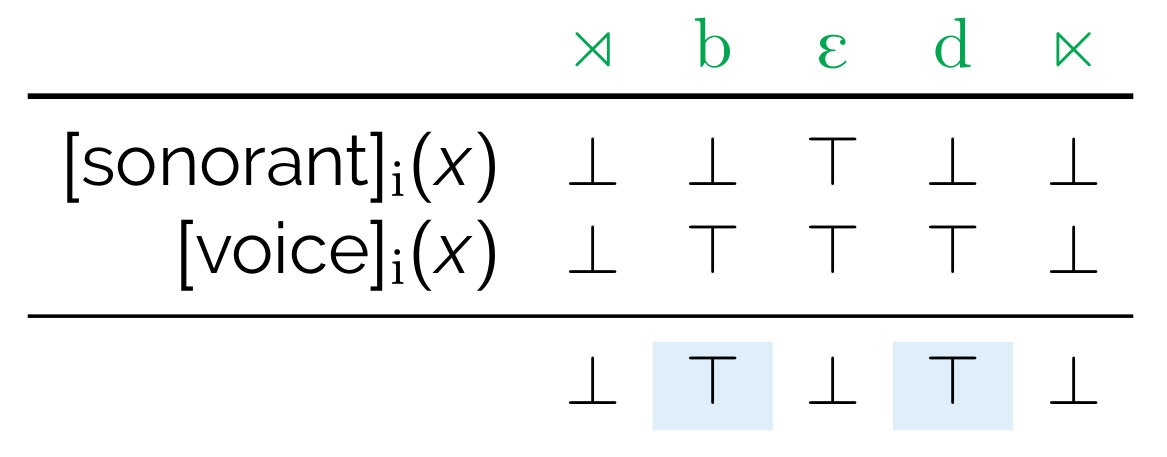Logical language
The core of BMRS syntax are expressions of the form
\[\mathtt{if}~A~\mathtt{then}~B~\mathtt{else}~C\]
that return boolean values (\(\top\) or \(\bot\))
For example,
\[ \mathtt{if}~[\mathrm{son}]_i(x)~\mathtt{then}~\bot~\mathtt{else}~[\mathrm{voi}]_i(x) \]
...is \(\top\) iff \(x\) is a voiced obstruent, as shown below.

Furthermore, \(A\), \(B\), or \(C\) can be another expression. Usually this is \(C\), to chain together expressions, as in
\[ \begin{array}[t]{l} \mathtt{if}~[\mathrm{son}]_i(x)~\mathtt{then}~\bot~\mathtt{else}~\\ \mathtt{if}~[\mathrm{voi}]_i(x)~\mathtt{then}~\top~\mathtt{else}~\bot \end{array} \]
As is perhaps obvious at this point, expressions define properties. For example, we can explicitly define what it means to be a voiced obstruent using the expression above.
\[\left[\begin{array}{l}-\mathrm{son}\\+\mathrm{voi}\end{array}\right]_i(x):=\mathtt{if}~[\mathrm{son}]_i(x)~\mathtt{then}~\bot~\mathtt{else}~[\mathrm{voi]_i(x)}\]
Or what it means to be word-final.
\[ \mathrm{final}_i(x):=\mathtt{if}~\ltimes(s(x))~\mathtt{then}~\top~\mathtt{else}~\bot \]
And then what it means to be a word-final voiced obstruent.
\[ \mathrm{D\#}_i(x):=\mathtt{if}~\left[\begin{array}{l}-\mathrm{son}\\+\mathrm{voi}\end{array}\right]_i(x)~\mathtt{then}~\mathrm{final}(x)~\mathtt{else}~\bot \]